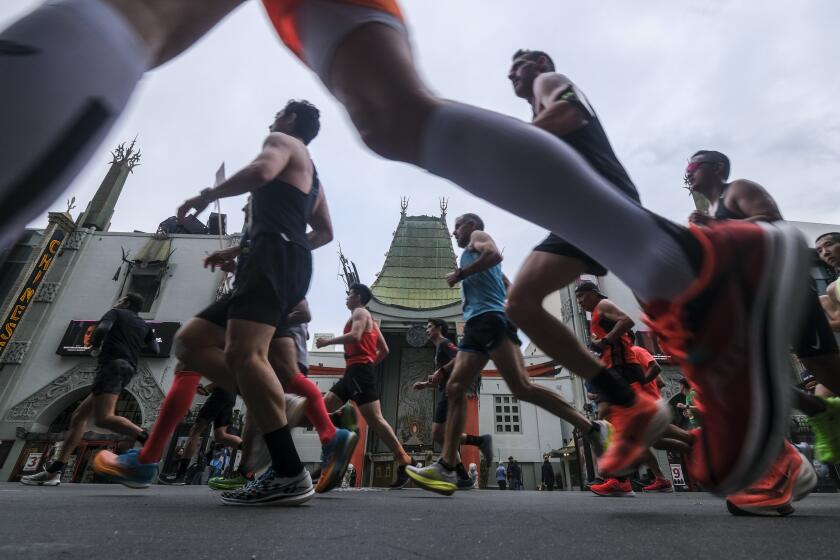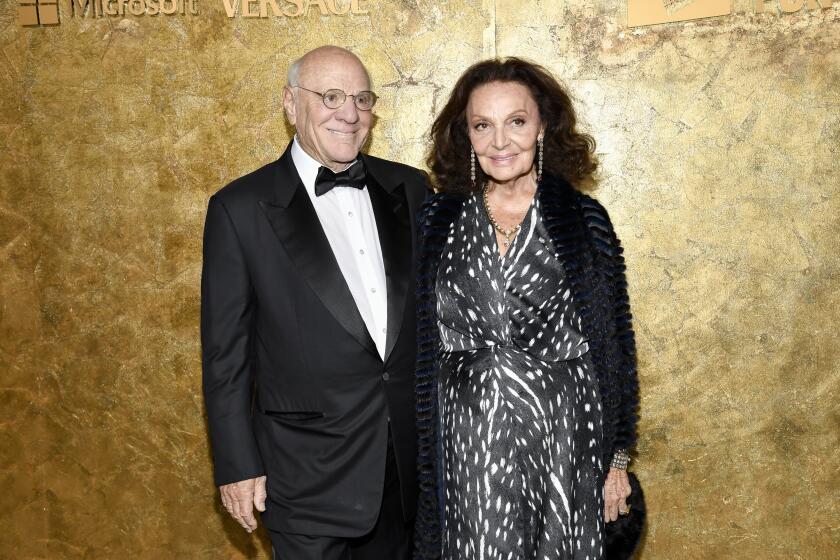THE UPS AND DOWNS OF A SECOND LOOK
- Share via
The thing is, you can only see a film once. After that, the mystery and the suspense are gone, and what you experience in lieu of the suspense is anticipation. The anticipation can be lovely, if you liked the film the first time around, and fairly dreadful if you didn’t.
In between are the films you couldn’t quite make up your mind about and go to see again in hopes of divine guidance. The iron law of reviewing, I’ve always thought, is that the good film looks even better the second time around because you have the emotional leisure, so to speak, to appreciate more closely how the film makers did it.
The failed film looks even worse, the warts and blemishes all the more apparent because you know there are no treats lurking in the next scene or the next reel.
The mixed film (as the majority are) reveals both its strengths and its weaknesses more clearly on second sight, and once in a while the trial balance of profit and loss comes up a bit different from the first accounting. In an ideal world, of course, the critic would view all but the terminally ill dogs more than once. In an ideal world, the critics would never be wrong, either.
“The Mission,” to get to cases in point, still seems to me a brave, original, thoughtful and frequently spectacular motion picture, with images by cinematographer Chris Menges of the Iguazu Falls and the surrounding scenery that have not been surpassed this year.
But on a second viewing, it is harder to set aside some elements that do not work. The murder of his brother by the Robert De Niro character in a love triangle, useful as it may be to motivate De Niro’s diametric change of life and soul, is painfully florid and melodramatic.
The villainous colonials are unremittingly, villainous and the Indians are idyllically fine, yet less complex than they must have been.
Still, “The Mission” has a strong spine of substance; it was intended as a timeless and timely parable of might versus right, earthly powers and unearthly faith, at odds in the context of an exploitive colonialism that is not yet absent from the globe.
In the superb portrayal by Ray McAnally of the anguished emissary from the Vatican, the philosophical divisions find their voice, and Robert Bolt’s vision is most eloquently realized. In a bold stroke, director Roland Joffe has given McAnally a last, wordless gaze at the audience after the end credits. It is meant to haunt, and it does. It is a reminder, among other things, of a film that does not miss greatness by a great deal.
Paul Theroux’s novel “The Mosquito Coast” would have seemed almost impossible to translate to film successfully. It is a novel of ideas, a modern fable on the corruptions of materialism, on thermonuclear anxiety, on the dream of a return to Nature at its purest, further refined by the efforts of individual man at his most creative.
But rhetorical flights that sing on the printed page do not always (or often) transpose to the literal eye of the camera. Like “The Mission,” “The Mosquito Coast” is an impressively physical film, the jungles of Belize doing for the jungles of Paraguay-Argentina-Brazil, with a jungle-edged river evoking echoes of the river to the heart of darkness in “Apocalypse Now.”
Despite the size of the film and a matching heroic performance by Harrison Ford as Theroux’s inventor-philosopher, a first look raised bothersome questions.
From the start, the character’s eccentricity seems precipitously tilted into madness, even before things start to go wrong. His relationship with Helen Mirren as his passive, patient and long-suffering wife is problematical at best, thinly defined or rationalized.
The source of his apparently bottomless money supply, and of the building materials for his multistory jungle refrigerator, are not much explained. (It doesn’t really matter, except that you ought not to be stopped by mundane details.) Yet with it all, the film has an unsettling impact, and it creates lingering, provocative afterimages.
Seen again, the flaws of “The Mosquito Coast” are not less apparent, but they are more than overweighted by the film’s strengths. We can guess, if we don’t see, that Ford in courtship would be a life force--talking incessantly, charming birds out of trees, promising a marriage of free spirits, blissfully contemptuous of society’s constraints.
Director Peter Weir and adapter Paul Schrader don’t provide many clues that Mirren has begun to see that all is no longer wonderful. They are subtle but they are there, taut and wordless glances, mostly. Her last glimpse of a kitchen abandoned in mid-chore, for example, is a mixed symbol: dirty dishes left behind, but in a sink of steaming hot water, also being left behind, and the gaze is ambivalent.
I still wish we knew more about her willing obeisance to this man, tyrannical in sanity as well as in madness. But what grows even clearer the second time around is that nothing in Theroux’s perspective is simple.
Escape is no escape; we carry our world with us. The inventor’s o’er weening pride and misplaced confidence ride to the jungle with him, fatefully, and a little civilization is as much trouble as too much.
In the movies, we have grown used to unflawed heroines and heroes on whom Fate pounds like hammerblows, with varying consequences. Cinematically, we are somewhat less used to initially attractive but deeply flawed characters who invite their own destruction by tempting the Fates.
It takes some getting used to, in fact; but a second look at “The Mosquito Coast” helps to see more sharply an imperfect but original and uncompromised film.
More to Read
Only good movies
Get the Indie Focus newsletter, Mark Olsen's weekly guide to the world of cinema.
You may occasionally receive promotional content from the Los Angeles Times.









